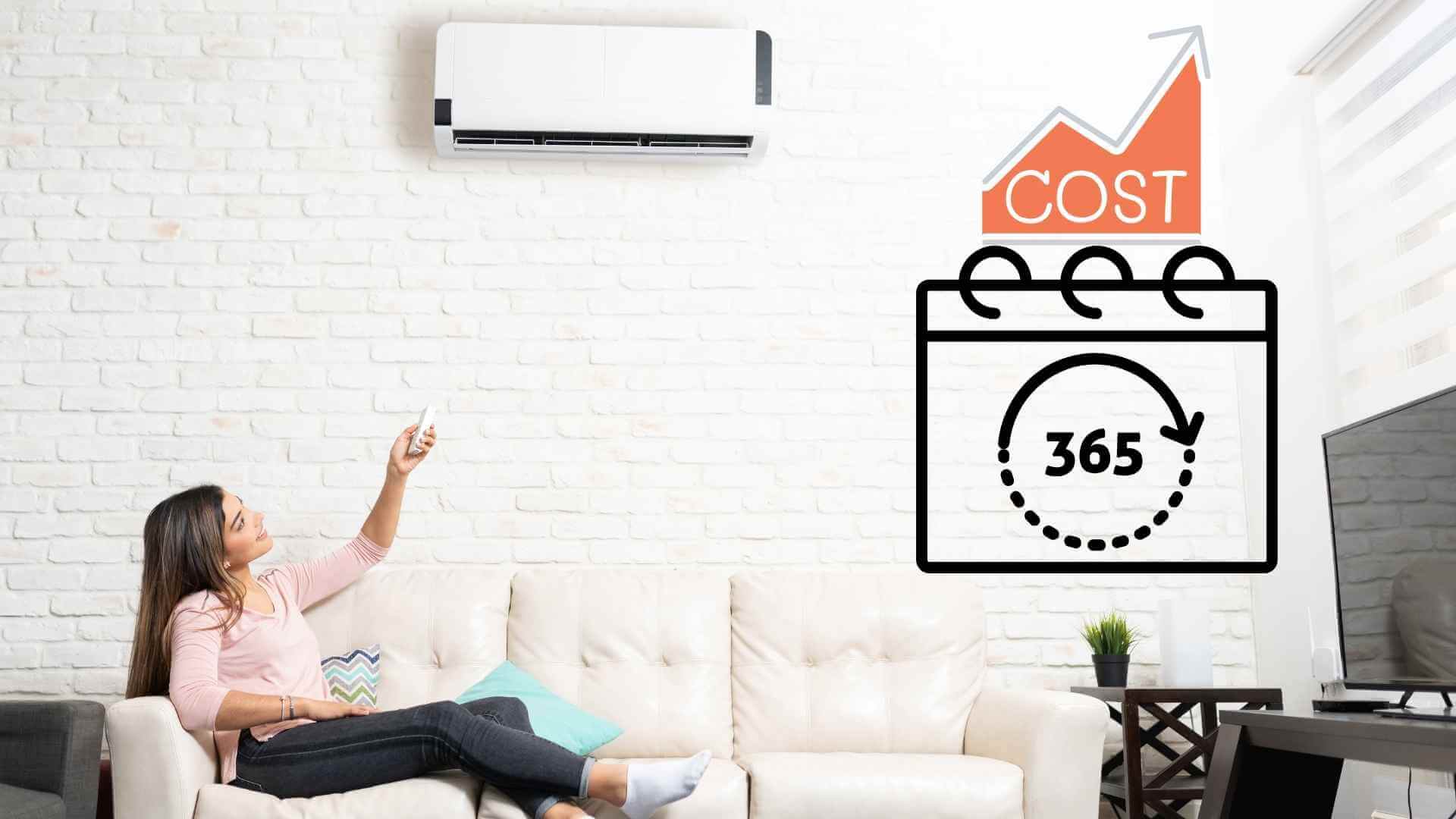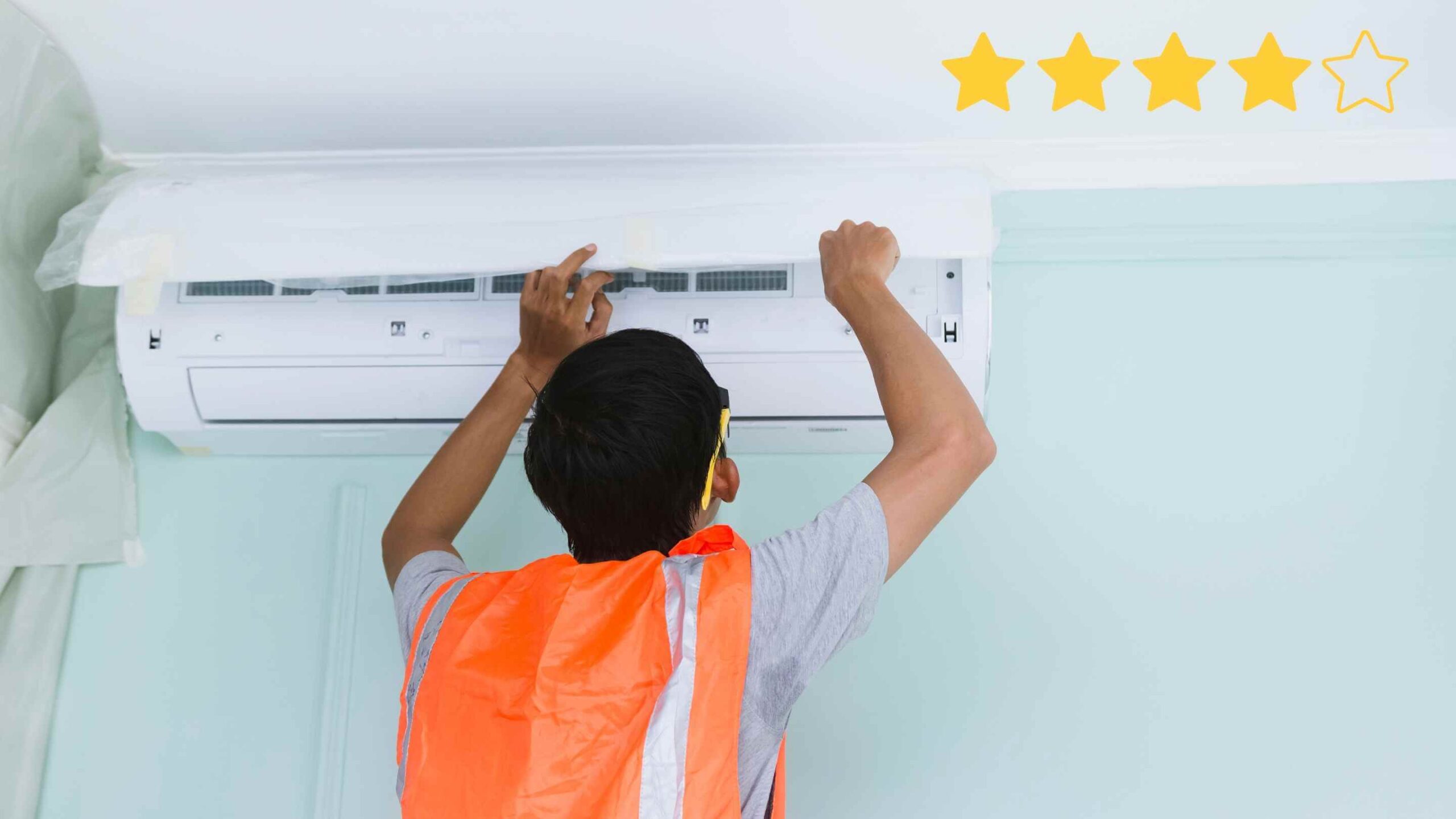As summer heat waves intensify across the USA, air conditioning (AC) has become a crucial part of home comfort. However, increased reliance on AC systems often leads to higher energy consumption, driving up energy bills and contributing to environmental challenges. With energy efficiency at the forefront of modern living, homeowners are looking for ways to reduce cooling costs without sacrificing comfort.
This comprehensive guide will walk you through practical energy-saving tips for AC users in the USA, using sustainable cooling strategies that benefit both your wallet and the environment. To simplify things, you can also use our AC Bill Calculator to determine the precise electricity consumption and expense.
The Importance of Energy Efficiency in Air Conditioning
Why AC Efficiency Matters
Air conditioning plays a significant role in home energy consumption, accounting for nearly 19% of a household’s electricity use. With such a large impact on energy bills, improving air conditioning efficiency can lead to substantial savings. Moreover, implementing energy-saving practices helps reduce the overall environmental impact of AC use, contributing to a more sustainable home energy model. By enhancing your home’s energy efficiency, you can enjoy cost-effective cooling while also benefiting from better temperature regulation and eco-friendly air conditioning.
1. Optimize Thermostat Settings for Maximum Energy Savings
Set Your Thermostat Wisely
One of the simplest yet most effective ways to optimize air conditioning efficiency is by adjusting your thermostat settings. For maximum energy efficiency, the U.S. Department of Energy recommends setting your thermostat to 78°F (25.5°C) when you’re at home. This setting ensures you stay comfortable while maintaining energy-efficient air conditioning practices. When you’re away, raise the temperature by 7–10°F to avoid unnecessary cooling, helping to reduce cooling energy consumption.
Tip: Use Smart Thermostats
Smart thermostats can help regulate indoor temperatures more efficiently by learning your habits and adjusting settings automatically. These devices allow for remote control and real-time adjustments via your smartphone, giving you greater control over your home’s climate. By utilizing smart thermostat technology, you can achieve energy-saving results without sacrificing comfort. In fact, smart thermostats can reduce your energy bills by up to 10% annually.
2. Perform Regular AC Maintenance
The Role of AC Maintenance
Proper AC maintenance ensures that your cooling systems are working at peak efficiency. Neglecting routine maintenance can lead to unnecessary strain on the HVAC systems, causing them to consume more energy while delivering less cooling. Simple maintenance practices, such as changing air filters and scheduling professional tune-ups, can improve air conditioning efficiency.
Air Filter Replacement
Clogged air filters can restrict airflow, causing your AC system to work harder and use more energy. Regularly replacing air filters—at least every 1–3 months—is crucial for maintaining energy-efficient appliances and reducing energy bills.
Professional HVAC Inspections
Annual inspections by a certified HVAC technician are essential for ensuring the longevity and performance of your cooling systems. Technicians will inspect your system for potential issues, clean coils, and verify that refrigerant levels are optimal, ensuring sustainable cooling with minimal energy waste.
3. Seal Ducts and Insulate Your Home
Improve Home Insulation
Good insulation plays a critical role in home energy conservation by preventing cool air from escaping and hot air from entering your home. Insulating attics, walls, and floors helps maintain consistent indoor temperatures, reducing the workload on your AC system. According to the U.S. Environmental Protection Agency (EPA), proper insulation can reduce HVAC energy usage by up to 15%.
Seal Leaky Ductwork
Leaky ducts are a major contributor to energy loss, as they allow cooled air to escape before it reaches the rooms. By sealing air ducts with high-quality tape and mastic sealant, you can prevent energy wastage and improve cooling energy savings. Sealing ducts also helps optimize cooling system efficiency, ensuring that air conditioning energy consumption remains low.
| Energy Efficiency Tip | Benefit |
|---|---|
| Seal leaky ducts | Prevents 20-30% of air loss, improving AC efficiency |
| Insulate attics and walls | Reduces the need for excessive cooling by maintaining temperatures |
4. Utilize Ceiling Fans for Added Comfort
Maximize Air Circulation
Ceiling fans can supplement your AC system by circulating cool air, creating a wind-chill effect that makes you feel cooler without lowering the room temperature. Running fans in conjunction with your AC system can help you raise the thermostat by 4°F while maintaining comfort. This practice significantly reduces cooling energy consumption and increases energy efficiency.
Correct Fan Direction
Ensure that your ceiling fans are set to rotate counterclockwise in the summer to push cool air downward. This will enhance indoor temperature optimization while promoting efficient air conditioning practices.
5. Upgrade to Energy-Efficient AC Units
Invest in High-Performance AC
Upgrading your old air conditioning unit to a high-performance AC can make a significant difference in reducing energy bills. ENERGY STAR®-rated models are designed to meet strict efficiency guidelines, delivering optimal cooling while using less energy. These energy-efficient appliances provide substantial long-term savings and are key to reducing your home’s environmental impact of AC use.
Why Choose High-Performance AC?
High-performance air conditioning units are equipped with advanced technology to ensure that your cooling needs are met without compromising energy efficiency. They use less electricity, reduce cooling costs, and offer eco-friendly air conditioning solutions that help combat climate change.
Calculate your air conditioning running costs with our AC energy usage calculator and optimize your cooling expenses.
6. Implement Smart AC Usage Habits
Limit Heat-Producing Activities
Certain household activities, such as cooking and using heat-producing appliances, can increase the temperature inside your home and place extra demand on your AC system. To avoid this, try to schedule these activities during cooler hours, such as early mornings or late evenings, to reduce the need for seasonal cooling.
Close Blinds and Curtains
During the day, close blinds or curtains to block sunlight from entering your home. This simple measure prevents heat gain, helping you reduce the strain on your air conditioning system. Reflective window films or thermal curtains can further enhance energy-efficient homes by reducing cooling load.
7. Monitor and Adjust Your AC Usage
Use Energy Monitoring Tools
Many modern homes are equipped with energy monitoring systems that provide real-time feedback on your energy consumption. These tools can help you track your cooling energy savings and identify opportunities to further reduce energy costs.
Participate in Utility Programs
Some utility companies offer demand-response programs that help reduce energy costs during peak usage periods. By participating in these programs, you can receive rebates or incentives for adjusting your AC usage during times when the grid is under stress, contributing to sustainable home energy solutions.
8. Enhance Natural Ventilation
Cross-Ventilation for Cooling
Using natural ventilation, such as cross-ventilation, can significantly reduce the need for air conditioning. By opening windows on opposite sides of your home, you allow cooler outdoor air to replace the warmer indoor air. This technique provides cost-effective cooling during cooler hours, helping to balance indoor temperatures without relying on AC systems.
Night Flushing for Optimal Air Quality
Night flushing involves opening windows to allow cooler nighttime air to circulate throughout the home, flushing out the hot air accumulated during the day. This technique helps cool the home naturally, reducing the need for air conditioning the following day.
9. Keep Outdoor Units Clean and Well-Maintained
Clear Debris Around the Outdoor Unit
A clean outdoor unit ensures optimal airflow and prevents your system from overworking. Clear leaves, grass, and other debris that can obstruct airflow around your HVAC systems. Regularly cleaning the coils and maintaining the outdoor unit will help extend the life of your AC while keeping energy bills low.
10. Schedule Regular Energy Audits
Conduct a Home Energy Audit
To truly understand how to optimize your home’s energy efficiency, consider scheduling a professional energy audit. Energy auditors can identify areas where your home is losing energy and provide actionable recommendations to improve home insulation, air sealing, and HVAC performance.
Benefits of an Energy Audit
An energy audit will reveal how you can save money on energy bills by improving indoor temperature optimization, upgrading insulation, and enhancing the overall efficiency of your cooling systems. By following the recommendations of a certified auditor, you can reduce cooling costs and improve air conditioning efficiency.
Conclusion: Embrace Sustainable Cooling Practices
By adopting these energy-saving tips, homeowners can significantly reduce their energy bills while enjoying eco-friendly air conditioning solutions. Whether you’re optimizing thermostat settings, upgrading to energy-efficient appliances, or improving home insulation, each step you take brings you closer to a sustainable home energy future. Embrace these practices today to achieve lasting cooling energy savings and minimize the environmental impact of your AC usage.
By implementing the right combination of strategies, you can ensure your home remains comfortable while promoting air conditioning and sustainability. Want to know how much energy your AC is using? Try the energy consumption calculator and get accurate results in just a few clicks.
![AC Bill Calculator [2025] | Official Site](https://acbillcalc.com/wp-content/uploads/2025/07/cropped-acbillcalc-logo-250x79.png)


